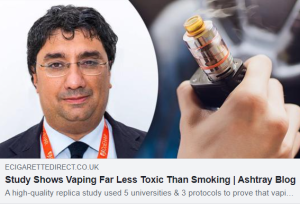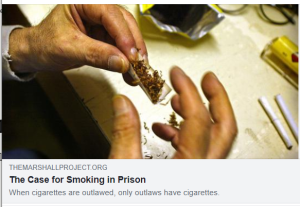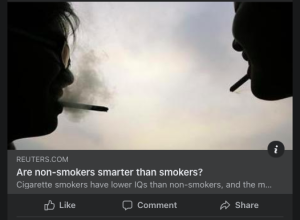5.4 Emotional Assessments
In chapter four we discussed people’s emotions, and how an emotional response to an online news headline or a social media post increases the likelihood that a person will believe in false information and share it. Not only do human emotions have an impact on the widespread belief in disinformation, but they also heavily contribute to how people interact with false information (how they engage with a post). Experts suggest that when an individual experiences a strong emotion, such as happiness, anger, pride, or vindication, that they should “STOP” before sharing (Caulfield, n.d., chapter 3). Some scholars recommend that to reduce visibility, the best thing a person can do is nothing (Buchanan, 2020a). Alternatively, there is an argument to be made on the side of learning how to think critically and make responsible choices in the online environment. In line with this, we suggest a ‘pause before sharing’ method. It is exactly as it sounds. When an individual comes across a piece of information (on or offline) they should pause, consider a few questions, then make the decision to engage with it (or not).
How to use it:
In this section, we will reflect on the four things that make people susceptible to disinformation on social media. For each, we will present an image that might stir emotion and suggest discussion points to consider before interacting.
1. The post looks credible.
It’s easy to make a post look credible. It’s also easy to make reliable information look like it lacks credibility. If a post evokes emotion, take time to ask questions before interacting with (liking or sharing) it.

Upon seeing this headline:
- Pause before interacting.
- Ask: Who wrote it? What makes them a professional? Is it credible? Read the article, taking note of the study mentioned, who conducted it? Was it a scientific study? If you don’t have time to read the article, don’t share it.
- Choose how to move forward. Remember it’s ok to do nothing.
2. The post stirs emotion.
Most pieces of false information have been created with the intent of inciting an emotional response in viewers. This example shows a BuzzFeed story about a vaping company that creates tobacco-based products that look desirable to children, things like juice boxes and candies. It’s easy to imagine the type of emotions people might feel upon seeing it: annoyance, frustration, anger… humour?

If the post incites emotion:
- Pause before interacting,
- Ask: What reaction is the creator of the post trying to get from me? Why is it making me feel such an intense emotion? Who benefits from this reaction and how? Read the article. Is the company actually creating products that look like this? If so, why, and should we, as social media users, feel concern? If you don’t have time to read the article, don’t share it.
- Choose how to move forward. Remember it’s ok to do nothing.
3. The post is something that has appeared repeatedly.

If a user sees a post multiple times, they should ask why. There are ‘bots’ online with the single job of reposting disinformation. From chapter three, we know that a social media site’s algorithm decides what to show based on popularity. The more people that have commented on or liked a post, the more likely it will appear. This has zero connection to the accuracy of the post. Just because a post appears repeatedly, does not make it more accurate.
- Pause before sharing.
- Ask: Have I seen something like this before? Was it similar or the same? If so, when and where? Is that impacting your belief in its validity? Watch the entire video. If you don’t have time to do so, don’t share it.
- Choose how to move forward. Remember it’s ok to do nothing.
4. The post is something a user already believes to be true.
This is called confirmation bias, which is when someone confirms a belief they already hold to be true. Confirmation bias can impact the information we see on our newsfeeds because the more a person likes a particular type of content, the more they will see similar posts. Those posts will most likely align with what they already believe and the cycle will continue. This system of receiving information does not make it more accurate.

- Pause before interacting.
- Ask: Is this something that I already thought to be true? Have I considered the other side of the issue? Is the post I’m looking at coming from a site with a biased viewpoint? Read the entire article before you decide if it’s reliable. If you don’t have time to read the article, don’t share it.
- Choose how to move forward. Remember it’s ok to do nothing.
Pause Before Sharing Example
If you were to come across a headline like the one below about non-smokers, how would it make you feel? What is your reaction to the suggestion that people who don’t smoke are smarter than those who do? What questions do you have about the article?

It is likely that this post stirs emotion. When Barney came across this post, he felt vindication, he thought, “Yes, I’m a non-smoker and I am smarter than the smokers I know.” He wanted to share this right away with his friends and family to say, “I told you so.” Someone else may want to click on the story to read more. For any of these reactions, it is important to ask: who would benefit? If Barney shares the story because it reinforces one of his beliefs, he might feel better, but he won’t know if the story is accurate. If he shares it with his family right away, they may get angry at him because he is trying to tell them how to feel or thrust his opinion on them. If he clicks on the story to read more, he needs to consider that the publisher may make money from his click.
The best course of action is for Barney to read the entire article before he decides to engage with it or share it. It may be that the headline grabbed his attention but the article itself isn’t quite so shocking. He may decide to do nothing with the article.

